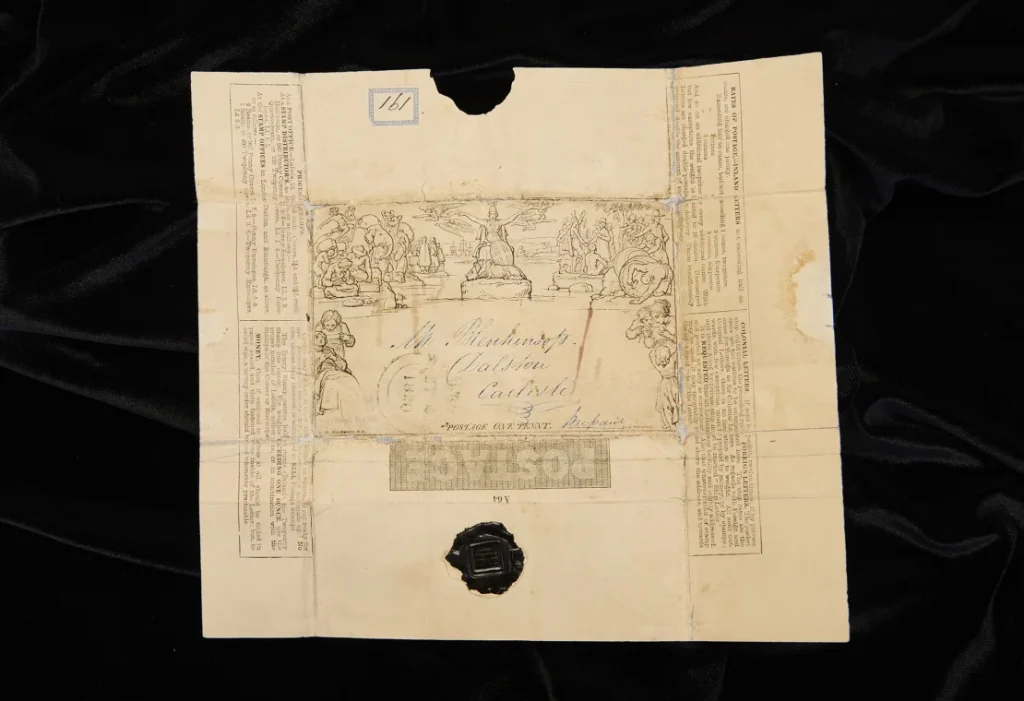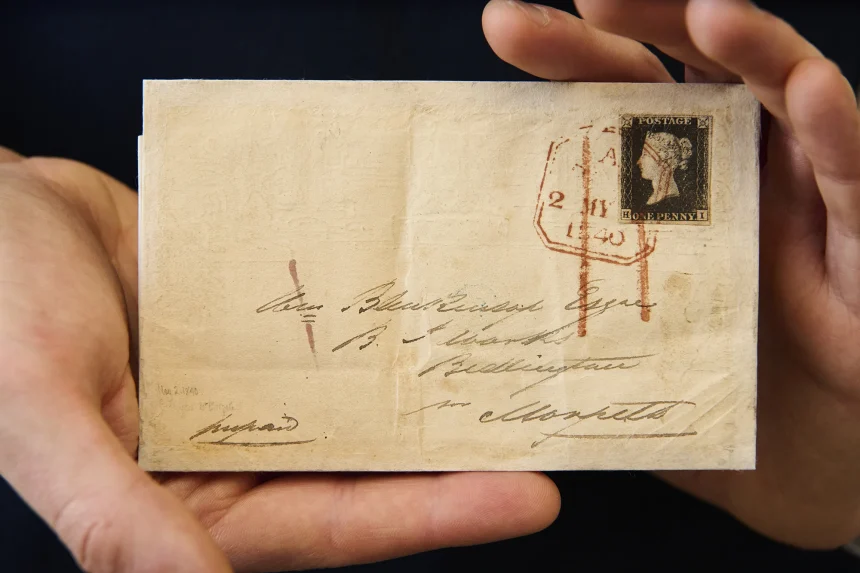When it goes up for auction at Sotheby’s in New York next month, the first known piece of mail delivered using a prepaid stamp—hailed as “one of the greatest leaps forward in human communication”—could bring in between $1.5 and $2.5 million.
According to Sotheby’s, if the piece reaches its estimated price, it will rank among the most costly postal history lots ever offered for sale.
The initial recipient of the May 2, 1840, letter was William Blenkinsop Jr., the 35-year-old manager of a Victorian iron works located in the northern English town of Bedlington. According to Sotheby’s, all that is known about the sender of the letter is that they paid for its postage in London, which is almost 300 miles to the south, and posted the missive there.

Following receipt of the letter, Blenkinsop Jr. redesigned the envelope as a “Mulready”—an elaborate wrapper adorned with pictures of the British Empire that served as an additional prepaid payment option issued concurrently with the Penny Black.
The contents of both letters have been lost, but the second packet was received by Mr. Blenkinsop—likely his father—who resided 75 miles distant in Dalston, Carlisle, and retained it.
Richard Austin, Global Head of Books & Manuscripts at Sotheby’s, said in a statement: “Surviving over 180 years, the ornate Mulready envelope sealed with a Penny Black revolutionized the way people from all walks of life correspond, exchange ideas, share news, and express themselves.”







